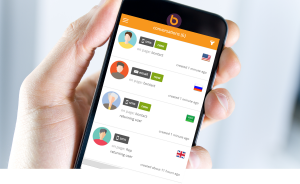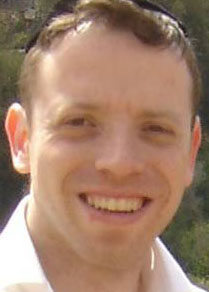Bontact builds a multichannel contact app. We make a cross-platform widget which allows site visitors to contact the site owner through chat, SMS, callback and email, and takes less than three minutes to install.
There were chat apps, but we realized that the next step was adding mobile-specific features like SMS and international callback. We realized that for business sites, being on hand when the visitor wants answers to his questions is key to driving conversion rates, and that users spend most of their time on these sites browsing from mobile devices. So there was a gap in mobile-specific chat support that we wanted to fill.
We built a minimum viable product and launched to initial traction. So far we’ve been backed by several investors. We just graduated from the Microsoft Accelerator program this summer, and have several thousand users, several hundred of whom are paying users. Right now our team consists of six people.
Our biggest success factor so far has been product-market fit. Our product was built around a real perceived need, which is huge. So many startups fail because they come up with a cool product that is focused on the engineering and tech behind it as opposed to the needs of the customer. That makes it very hard to gain traction, because you spend a lot of energy explaining to people that they need something which they don’t feel they need.
Our second-biggest success factor has been the culture of the company. We’ve found that fit where we are relaxed but focused and professional. Most of us have kids, so we have other priorities to balance, and the company has not turned into that all-consuming death race that a lot of startups fall into. At the same time, everyone is aligned with the company goal, which is to make the best contact app on the market. This makes for a really nice office atmosphere.
The biggest challenge we’ve faced in running the company is focus. There are a lot of directions we can go, and features we can add. The Bontact app dashboard, for instance, shows the current visitors to the site-where they came from, how long they’ve been on the site, which pages they’ve visited and so on. So we could easily add CRM features, or an analytics suite. It is a constant challenge to stay focused on the mission and not spin off on tempting tangents. As a startup, we are not Google. We have limited resources, both in terms of money and manpower, and we can’t afford to lose track of the main goal.
The second-biggest challenge has been technical. Our product integrates channels that, from the engineering side, inhabit different planets. SMS, real-time chat and VOIP callback are completely different. Making them all work together in one widget, and making that widget function in platforms as different as WordPress, Magento, Wix and Shopify was a serious challenge. And soon we will be adding more communications channels.
Of course, every challenge has a flip side. Having limited resources and being forced to keep focus makes us concentrate on the most important thing in a startup, product-market fit (on which more below.) It keeps us aligned with each other. And the technical challenge, aside from being fun to solve, presents a barrier to entry to competitors, which is important.

Words of advice for those chasing the startup dream: first, keep focus on achieving product/market fit. Constantly ask yourself whether the market you are targeting is good enough, and whether the product you are making is good enough for the market. Second, keep a balance between work and the rest of your life. An engineer or marketer who is working 16 hours a day right now is worthless to the company if he will hit burnout in a month or two. And third, stay flexible. Don’t overcommit to a course of action. Remember, it’s a learning experience, and what you see today may not be what you see in a month. So today’s plan may change drastically based on emerging information, which is okay-as long as you maintain focus on product-market fit.




















